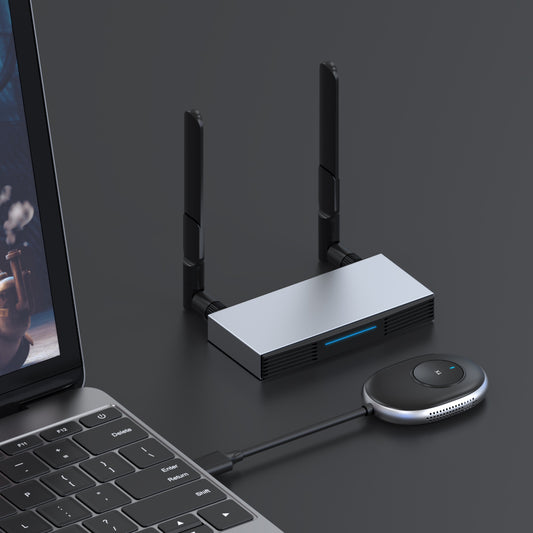
What Is The Problem With Hybrid Meetings?
Your organization can engage in the contemporary business environment using hybrid presentations. Your company's options with hybrid meeting solutions include:
-
Recruit top talent in a market that is extremely competitive
efficiently onboard team members, enabling them to succeed more quickly
-
Bring together team members for productive meetings both locally and remotely.
Presentations to external stakeholders can increase excitement.
-
Team members should receive training and career growth.
Hybrid meetings have many advantages, but they also have the problem with hybrid meetings . The problem with hybrid meetings meeting management might sometimes be easier stated than done. Who hasn't experienced faulty meeting links, interruptions, and screen sharing issues?
Every meeting host and participant has a long list of issues that arise before to, during, and following online meetings.
Our Proscreencast has solved the problem with hybrid meetings . In this article,we delve deeper into both the typical the problem with hybrid meetings as well as solutions. Read on for our best advice for conducting effective hybrid meetings and the technologies that can turn dreary sessions into exciting ones.
What Troubles Does The Problem With Hybrid Meetings Bring Us?
The problem with hybrid meetings can be encountered for various reasons Implementing a hybrid approach can be difficult, from technology issues to managing remote team members. However, when weighing the advantages and drawbacks of hybrid working, the advantages frequently surpass the disadvantages.
The problem with hybrid meetings is that:
Access To Technology: Your team members must have the exact same technology as you use in the office in order to collaborate efficiently while away from the office. Lending laptops, displays, and mobile phones can frequently make this simple. What about access to the internet? You can (often) check that your service satisfies your needs at the office. Rural remote professionals may find this to be much more difficult.This is one of the problem with hybrid meetings.
Disconnected from Organizational Culture: By making employees feel like they are a part of a larger team, a positive workplace culture can boost engagement. They collaborate with their coworkers who adhere to comparable principles and beliefs, so they aren't only working for their employer. Yet, it may be more difficult to forge this connection when employees arrive and depart from the office at various times.
Disrupted Work Processes: Transitioning to a new system is difficult even with the advantages of hybrid work. Coordination of synchronous and asynchronous employment, technology distribution, online meeting protocols, and other tasks are required for hybrid work. Employees who are accustomed to the previous circumstances may find these adjustments to be frustrating at times.
Difficulty Working Around Each Other: Hybrid work models greatly increase the efficiency of individual work, but what about teamwork? Finding ways to keep a team's sense of community while implementing a hybrid work style is one of the difficulties that businesses encounter. That is possible, but managers will need to balance schedules, consider comments, and improve communication among staff members who work remotely.
Video Interruption Problem:In-office facial expressions are routinely missed by remote workers, especially when someone is screen sharing and you can't see their face at all. Video that is glitching is also incredibly annoying, and if it fully cuts out, remote teammates frequently turn off their video or leave the conference and come back. Also, until the stream improves, there will be awkward silences, gaps in the dialogue, and disconnected speech from remote colleagues who are unaware that there own video (or audio) is frozen.
It's also simple to feel quite cut out when teams brainstorm in person, especially if they're utilizing a whiteboard in the workplace, as the whiteboard isn't always readable online and it's harder for them to contribute.
And when video goes out during a call due to internet hiccups or slowness, it distracts everyone and makes it difficult for participants who are participating remotely to hear you effectively. Team members who are present may choose an audio-only call if visual conferencing equipment is not easily accessible. Yet if technology is difficult to use or information technology isn't readily available, people are left to rely on the skills they already possess.
Cooperative Communication Issues: When there are more people in the office than are joining remotely, remote workers may feel left out of the conversation. It can be difficult for them to feel like a part of the conversation, and they could conclude that their opinions don't count as much. Also, it might be difficult for remote workers to know when to add a comment or interject, so their contributions are sometimes overlooked. Because of the resulting lack of visibility, remote workers may experience more stagnant careers and fewer prospects on teams that don't actively endeavor to prevent it.
Yet, it's natural to want to talk to the folks you're with in the workplace while you set up the meeting. Onsite teammates are aware that it's best practice to wait until the remote counterparts are looped in. Feelings of guilt that they are excluding individuals on the periphery may result from this. For remote workers, it also results in being forced to repeat what had been said earlier, which may be annoying and a waste of time.

How To Solve The Problem With Hybrid Meetings?
Beginning the meeting promptly
Respect for guests' time is demonstrated by beginning meetings on time. Yet, because attendees can engage virtually and in person, this is especially important for hybrid meetings. The host won't be in the room yet, but the in-person employees will be aware if the meeting starts late, so they may take their time entering. The remote workers won't know what's going on as they wait online for the host to start the meeting. So, it's crucial to start the meeting on schedule in order to have a successful hybrid meeting.
Check in on hybrid team members to find out if they feel supported during meetings
Every employee, whether onsite or remote, may have a sense of insecurity when contributing if they are unable to read body language cues and receive implicit feedback. Also, when someone on the call feels as though they haven't been heard by everyone, it can be frustrating and cause them to withdraw, which prevents them from participating as much as they would like to.
Hybrid technology solutions that enhance collaboration and meetings
By investing in excellent hybrid meeting technology that is created particularly to include all those on the call, every time, all of the problems and worries described above can be largely resolved. Starting with how simple to use and adjustable your solutions are, this goes all the way up to having the highest-quality tech specifications and reliable connectivity.
At the basic level, ensure that employees working in the office or other places can use high-speed Wifi, use the more efficient SC02 in small meeting rooms, and use SC03 that can support stable long-distance transmission in large meeting rooms.
Conclusion
Hybrid meetings have the best of both worlds. They include the advantages of face-to-face and teleconferencing, and make employees happy by letting them choose the way they like to work. While the problem with hybrid meeting may bring their own challenges (such as technical difficulties or not being able to hear and see everyone), following the above tips will help employees solve the problem with hybrid meetings conduct productive and efficient hybrid meetings!








